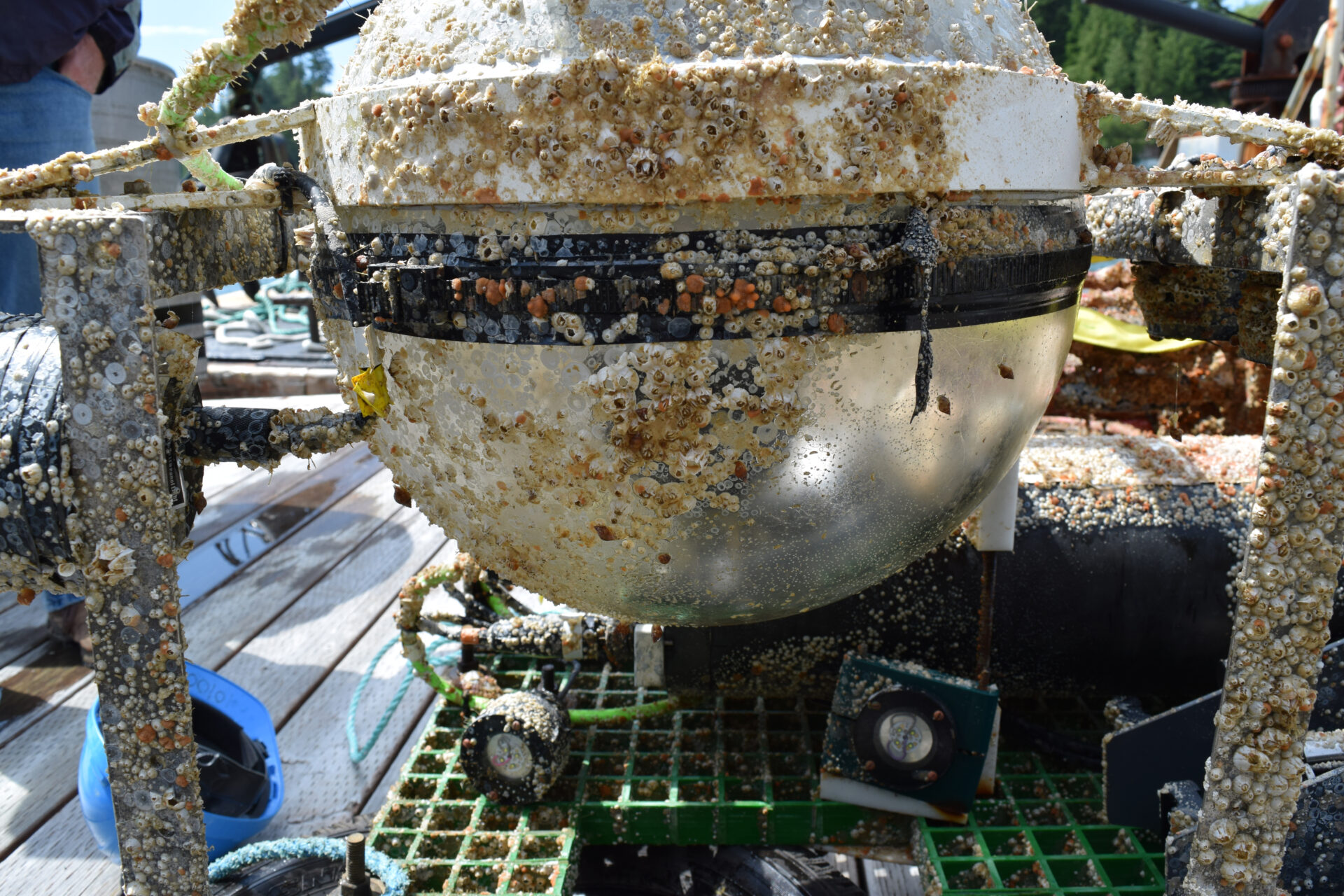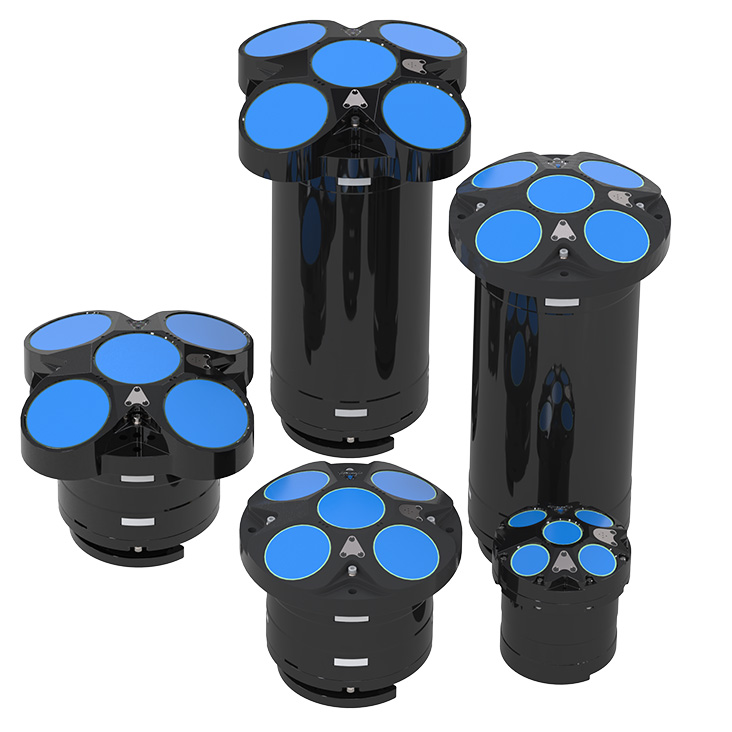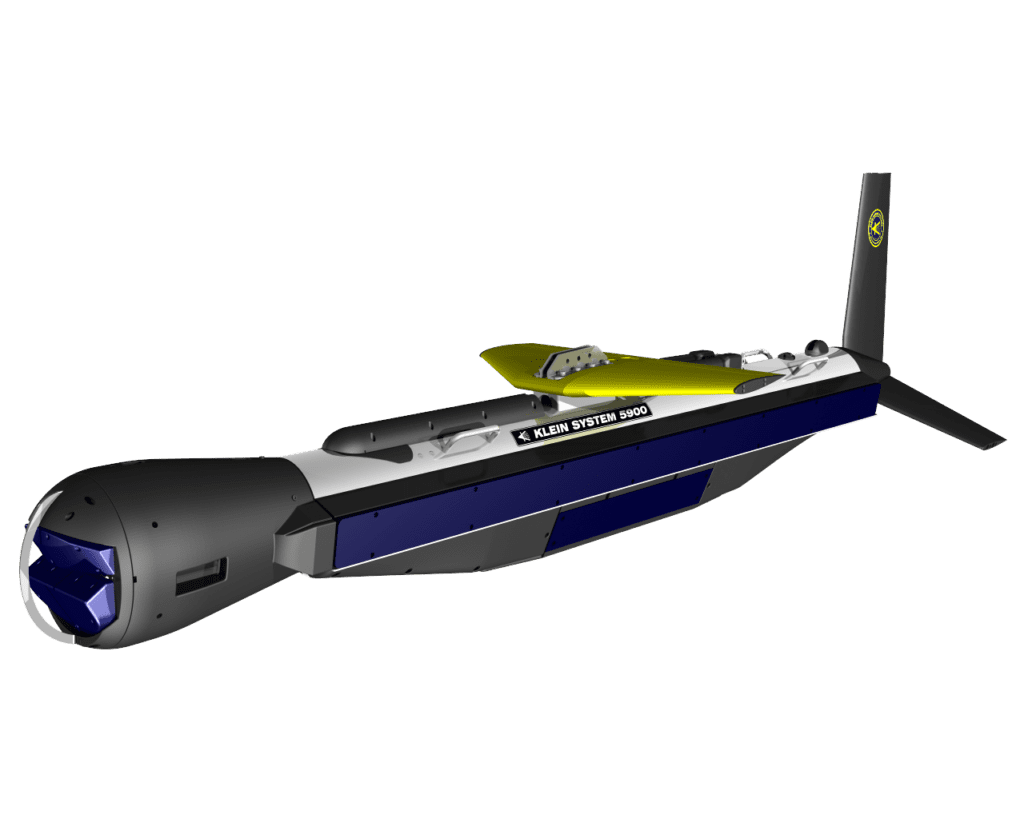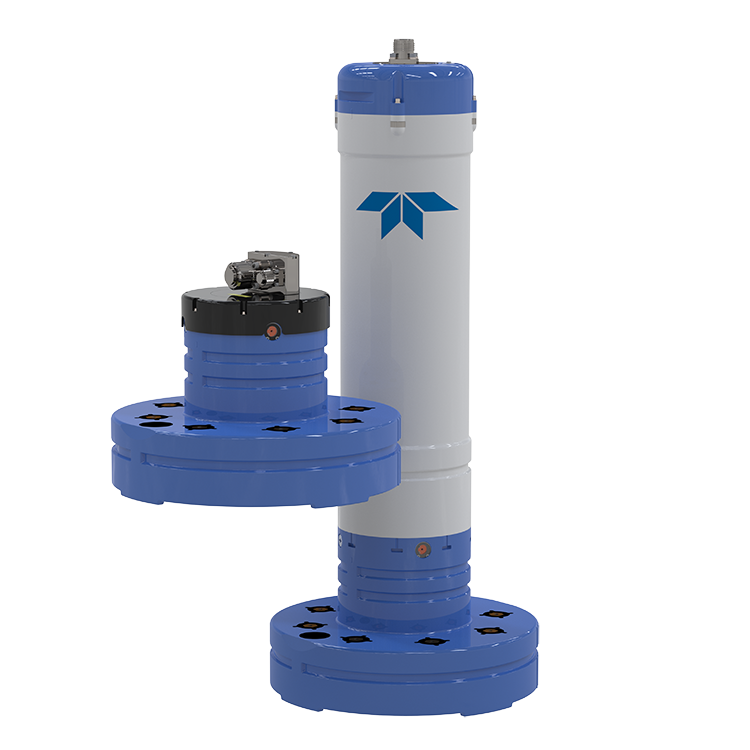BlueZone partners with over 50
world-leading original equipment
manufacturers and systems providers
AML Oceanographic UV Biofouling Control
Non-Toxic, Non-Contact Antifouling Solution
When instrumentation is deployed underwater in a stationary position for long periods of time, biofouling will occur. This unwanted marine growth causes sensor drift, requiring preventative measures to ensure accurate data. Previously, the two most common methods to manage biofouling were mechanical wipers and chemical dosing. Neither is ideal, with the first being unsuitable for sensitive lenses and complex geometries, and the second being harmful to the environment.
AML’s biofouling control technology uses ultraviolet light to provide a non-toxic, non-contact solution to prevent marine growth. A biofouling solution unlike any other method currently on the market, Streetlamp UV and Cabled UV prevent biofouling during long-term, in-situ deployments. The LED modules bathe critical surfaces in ultraviolet (UV) light, killing early growth to prevent biofouling, and thus eliminating environmental drift in CTDs and multi-parameter instruments, and keeping critical surfaces of subsea devices clean.
Suitable for any situation:
- Sensors
- Lights
- ADCPs
- Camera lenses
- Hydrophones
- Sonar Heads
Key Benefits:
- Environmentally Friendly: No chemicals involved
- Long Lasting: Swappable UV lens has a lifespan of 2+ years
- Contactless: Protects surfaces with no direct contact
- Hydrophone Compatible: Operates silently
- Adaptable: Suitable for fragile and/or complex surfaces
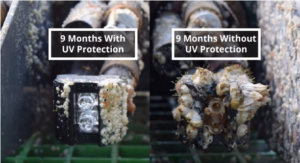
Read More:
UV Biofouling Control Datasheet
Key Features
Up to 25-hour mission duration
Speeds up to 4.2 knots
Increased module payload capacity
Search and recovery
Hydrography
Deep sea mineral exploration
Marine & Fisheries research
Product Enquiry
Related products
The Workhorse Proteus ADCP from Teledyne RDI collects current and wave data, measurements of flow, transport, and discharge, in oceans, estuaries, and rivers.
Read moreKlein Marine System’s 5900 sonar is the flagship in our exclusive family of multi-beam side scan sonar systems offering advanced ultra-high resolution side scan imagery with integrated gap filler sonar...
Read moreThe Pinnacle 45 is rated to a depth of 2000 m, and delivers a 1000 m current profiling range with a decreased size and weight, a game-changing swappable configuration, and...
Read moreRelated Articles
Ahead of the Tide: A Year of Milestones and Momentum- A Letter from the Director
By Neil Hodges, Managing Director, BlueZone Group As 2025 draws to a close, it’s a moment to reflect on a year that has been nothing short of transformative for...
Read MoreGlobal Journeys, Fresh Faces and Capability Growth That Sets the Stage for the Future For BlueZone Group, 2025 has been nothing short of transformative — a year defined by...
Read MoreSafer Summers: Innovation Beneath the Waves with ArtemisSAR and StarFish
The Advanced Sonar Systems Giving Surf Life Savers the Tools to Protect Lives with Greater Speed, Safety, and Confidence As we turn the page into Aussie summer, the rhythm...
Read More
